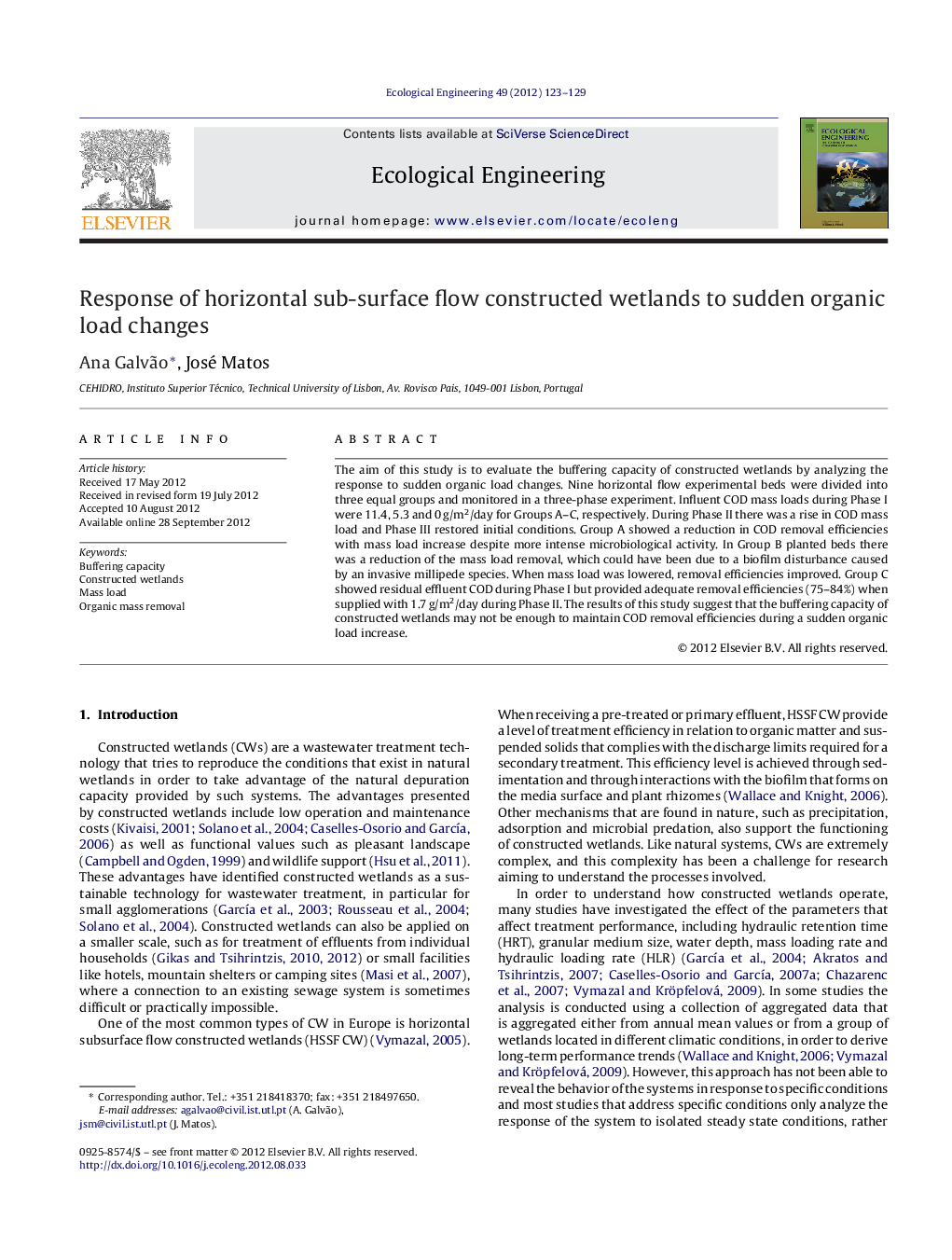| Article ID | Journal | Published Year | Pages | File Type |
|---|---|---|---|---|
| 4389894 | Ecological Engineering | 2012 | 7 Pages |
The aim of this study is to evaluate the buffering capacity of constructed wetlands by analyzing the response to sudden organic load changes. Nine horizontal flow experimental beds were divided into three equal groups and monitored in a three-phase experiment. Influent COD mass loads during Phase I were 11.4, 5.3 and 0 g/m2/day for Groups A–C, respectively. During Phase II there was a rise in COD mass load and Phase III restored initial conditions. Group A showed a reduction in COD removal efficiencies with mass load increase despite more intense microbiological activity. In Group B planted beds there was a reduction of the mass load removal, which could have been due to a biofilm disturbance caused by an invasive millipede species. When mass load was lowered, removal efficiencies improved. Group C showed residual effluent COD during Phase I but provided adequate removal efficiencies (75–84%) when supplied with 1.7 g/m2/day during Phase II. The results of this study suggest that the buffering capacity of constructed wetlands may not be enough to maintain COD removal efficiencies during a sudden organic load increase.
► A three-phase experiment included a COD mass load increase during Phase II. ► The increase in influent COD mass loads decreased removal efficiencies. ► Beds fed with tap water provided COD removal during COD mass load increase. ► The buffering capacity of CW may not be enough to maintain treatment performance.
